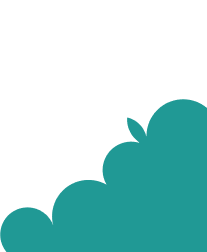
Unit 2 helps learners build a practical mindset for sustainability. It explains the core ideas, why they matter for business, and how to weave them into daily decisions, strategy, and communication.
What this unit covers
- What is sustainability thinking?
A balanced approach that considers environmental, social, and economic factors in every decision. - Why it matters now
Climate and energy pressures, fast digital change, and shifting customer expectations make sustainable thinking a core business skill. - Objectives
Protect the environment, support people and communities, use resources wisely, and maintain long-term economic stability. - How to apply it
Integrate sustainability into operations, strategy, and marketing; measure progress; and improve continuously.
Learning outcomes
By the end of Unit 2, learners will be able to:
- Explain sustainability thinking and the triple bottom line (people, planet, profit).
- Identify priority goals for their organisation (environmental protection, social impact, resource use, skills and awareness, innovation, long-term viability).
- Map stakeholders and balance their needs in decision-making.
- Build a simple, staged plan to embed sustainability in daily operations and strategy.
- Communicate progress clearly to customers, staff, suppliers, and the community.
Key ideas in plain terms
1) Balance and trade-offs
Sustainability thinking means balancing economic results, environmental limits, and social wellbeing. It accepts trade-offs, but aims for decisions that protect long-term value.
2) Objectives to guide choices
- Environmental protection: cut emissions, protect biodiversity, reduce pollution, safeguard water and soil.
- Education and awareness: build knowledge so people can act.
- Innovation: adopt better technologies and methods.
- Social aspects: fair work, inclusion, and community benefits.
- Resource use: efficiency, circular practices, and responsible inputs.
- Economic stability: growth that does not damage future prospects.
3) Strategy and operations
Bring sustainability into core business practice: plan, act, report, improve. Use the triple bottom line to review performance, not only finance.
Step-by-step: integrating sustainability thinking
- Understand the topic
Run a short session on what sustainability means for your business. - Impact and situation analysis
Map your environmental, social, and economic impacts. Note quick wins and bigger gaps. - Targets and plan
Set a few specific goals (e.g., cut CO₂ by 20% in 5 years; reduce waste by 30% in 12 months). Assign owners and timelines. - Implementation
Start with low-cost changes (energy, waste, water). Update purchasing rules and supplier expectations. - Communication and reporting
Share clear, honest updates. Keep messages simple and focused on outcomes. - Continuous improvement
Review results, adjust actions, and raise ambition when ready.
Best practices to consider
- Resource efficiency and circularity: prevent waste, reuse materials, and design for repair and recycling.
- Clean operations: energy-efficient tech, lower emissions, water conservation, and pollution control.
- Right-sized KPIs: choose a handful of metrics you can actually track (e.g., energy per unit, waste diverted, CO₂e).
- Supplier alignment: include environmental and social criteria in tenders and contracts.
- Staff engagement: training, incentives, and recognition for good ideas.
- Marketing with care: inform rather than overclaim; show evidence and progress.
Case snapshots
- Hospitality education: a leading hospitality school embeds sustainability into the curriculum, campus operations, and community projects, aligning learning with real-world practice.
- Research and analytics SME: a firm measures its own carbon footprint (including Scope 1–3) and builds tools to help clients audit, plan, and track sustainable strategies.
- Industrial technology leader: a company integrates sustainability into product design and customer solutions, helping industries cut emissions and improve efficiency.
These examples show how strategy, training, measurement, and operational change work together.
Assessment (sample questions)
- What are the three pillars of sustainability in business?
- In which year did the UN first define “sustainable development”?
- Is integrating sustainability thinking a single-stage or multi-stage process?
- What does ESG stand for?
(An answer key is provided in the unit pack.)
Key terms at a glance
Sustainable development, circular economy, greenhouse gas emissions, renewable energy, CSR, biodiversity, zero waste, responsible consumption, sustainability/ESG reporting.
Clear definitions help teams use the same language in reports and meetings.
How to use Unit 2 in your business or classroom
- Kick-off workshop: 60–90 minutes to agree priorities and draft two targets.
- Mini audit: list top five impacts and three quick wins you can deliver this quarter.
- Scorecard: pick 3–5 KPIs and review monthly.
- Supplier brief: one page on your sustainability expectations.
- Update rhythm: short, quarterly progress notes for staff and customers.



